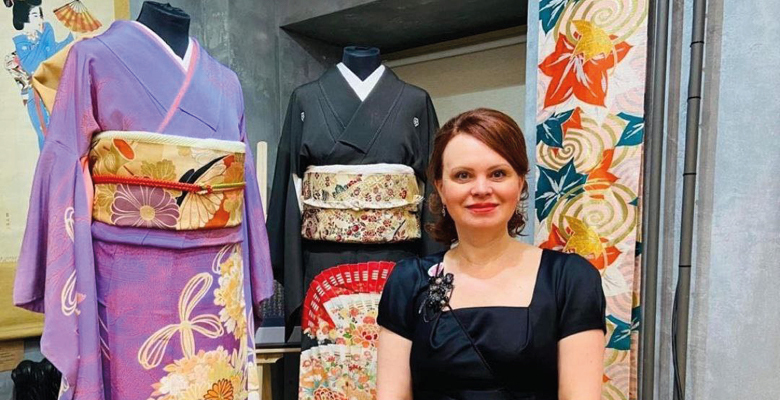
On these spring days, the Japanese cherry, or sakura, is blooming in England. This flower is a symbol or central motif of Japanese culture. In Europe, the cherry tree is better known for its fruit, but in Japan, it is principally ornamental. Since the country came out of its three-hundred-year isolation, the rest of the world has come to appreciate the importance of the cherry to Japanese culture. At the start of the twentieth century, the gardener Collingwood Ingram cultivated a unique variety of sakura and even saved a rare variety which had been considered lost in its homeland. It is in great part thanks to Ingram that many British streets are decorated with cherry trees with delicate pink flowers of the genus Prunus.
In 2020, during Britain's lockdown, the CherryWatch online campaign was launched. This was borrowed from the Japanese. Traditionally, during the flowering of cherry blossoms, people go for walks and have picnics under the trees. Lockdown required them to admire the blooms in photos and via live feeds. Now, with restrictions lifted and the trees in full bloom, we can enjoy this symbol of the Orient in person at many locations in Britain. But Japan cannot be reduced to Sakura alone. Attempts to understand the hidden connections between Japan and England were first undertaken in the 70s and 80s of the twentieth century by Vsevolod Ovchinnikov. We asked a prominent Japan specialist of our time, Tatiana Naumova, what makes Japanese culture unique, what the West has learned from the Japanese and how to do business with inhabitants of the Land of the Rising Sun.
How does the real Japan differ from how it is portrayed in films and books? What should a Japanophile be aware of on a first-time visit to Japan?
A lot depends on what books the Japanophile has read. Speaking from my personal experience, I began my acquaintance with Japan on the high note of classical Japanese literature and the serious works of Russian and foreign classical writers. The Tale of Genji and An Outline of Japanese Literature by N I Konrad were some of the first books about Japan that I read, and they’ve left an indelible mark on my heart. Later I was fascinated by everything I could find by Donald Keene. I was greatly impressed by T. P. Grigorieva’s book Born by the Beauty of Japan and the Chrysanthemum and the Sword, by Ruth Benedict. Of course, I also didn’t fail to notice the Soviet classic of popular Japanese studies, A Branch of Sakura, by Vsevolod Ovchinnikov. In the initial stage of familiarising myself with Japan, I developed a rather romantic view of Japan, with a clear aesthetic focus. Somewhere in my soul, doubts were hidden about whether much of what I was reading was in fact real. It seemed to me that part of it was long out-of-date, and part greatly exaggerated. How surprised I was when I finally went to Japan on an exchange programme! Then, I started to understand that things which had seemed exaggerated or made up turned out to be the truth to a much greater extent than I had expected.
Above all, this touches on depictions of nature. All Japanese literature is full of wonder about its constantly changing states; snow in winter, blooms in spring, the cuckoo in summer and the moon in autumn, as a poet said. Sometimes this seems tiresome or excessive, but when I first came into contact with the surprising world of Japanese nature, I started to see Japanese people’s unwavering fascination with it in a new light. The same goes for some aspects of interpersonal relations, for example, adherence to ritual and the norms of etiquette in everyday life.
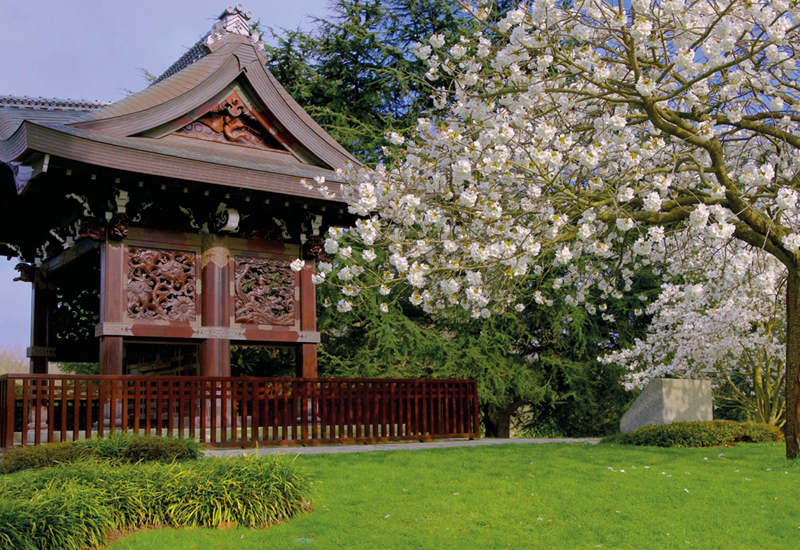
What do you need to be prepared for when dealing with the Japanese, especially if you’re doing business with them?
The Japanese are demanding people who pay attention to details. For this reason, expect them to look you carefully up and down. They assess how much your appearance and status match the reason for the meeting, your manners, how you carry yourself and whether you listen to people. They appraise how well you know the rules of politeness and etiquette and how willing you are to maintain a solicitous and engaged tone during a conversation. The outward appearance we project is still extremely important to the Japanese, as are the business cards that remain popular and without which no business meeting can be conducted in Japan. Negative impressions created on the first meeting can close the door for good on any further discussion. In my business experience, this occurrence hasn’t been a rarity. Firsthand, I’ve seen that dealing with the Japanese, especially in business is often very pleasant as they are polite, refined, punctual, disciplined and scrupulous, they don’t waste words unnecessarily, they value their own time and others’, their ability for teamwork is impressive and they follow agreements to the letter. However, on the other hand, the Japanese business world cannot escape its birthmark of isolationism. This is seen in an unnecessary degree of conservatism and a wariness towards all types of outsiders. Talented individuals are unlikely to fulfil their potential, as the highly patriarchal business ethos prioritises teamwork. A strict vertical hierarchy is the basis of virtually all their management systems. Incidentally, the language barrier, which I personally never felt, is nevertheless one of the nuances which need to be taken into account; not so many Japanese people have a command of foreign languages to the extent that it may appear when looking on from the outside. This is why you need to be prepared to get to grips with the intricacies of the Japanese business environment, expend a certain amount of energy on it and take at least a couple of Japanese lessons. Without this special preparation, without a willingness to study “foreign codes” before entering the society that lives by them, attempts to establish business relations in this county are unlikely to be successful.
What has the Western World borrowed from Japanese culture and what have you borrowed personally from Japan?
It is widely acknowledged that active cultural exchange between Japan and the West began in the second half of the nineteenth century. The intensity of this exchange has fluctuated in several waves. In the first wave, the Western World discovered the exotic charm of Japanese art, absorbed many of its distinctive traits and enriched them with its own palette of artistic expression. Western fascination with Japanese art at the turn of the twentieth century led to the birth of the Art Deco style, which includes many elements of Japanese aesthetics with its use of naturalistic plant-like motifs, love of asymmetry and distinctive palette of colours. Japanese ceramics, china, bronze, kimonos and Ukiyo-e engravings decorated many drawing rooms. Private collectors gathered artefacts that later formed the cores of museum collections. This was followed by a period of cooling relations and outright hostility from the 1920s to the 1940s, culminating in military confrontation during the Second World War. In the 1960s and 70s, awed by the success of the Japanese economic miracle, Westerners began to study Japanese human resources and production management techniques intently in an attempt to copy them. There soon followed a surge in interest in Japanese spiritual practices and philosophy of life, particularly reiki. Primarily these practices were of a Zen Buddhist persuasion. At the start of the new millennium, the borrowings became more tangible as Japanese cuisine came to the Western World. Sashimi and sushi, miso and wagyu became fixtures in the gastronomic maps of American, European and Russian cities. By the way, recently I’ve noticed that the West is going through a new surge of interest in the elements of traditional Japanese clothing. People are adding the kimono and haori jacket to their basic wardrobes with increasing assurance.
As for me personally, my borrowings from Japan are principally related to communication and management skills, the philosophy of aesthetics and the moral values of life, as well as the ability to see beauty in small things and be grateful for every time my life’s journey touches another person.
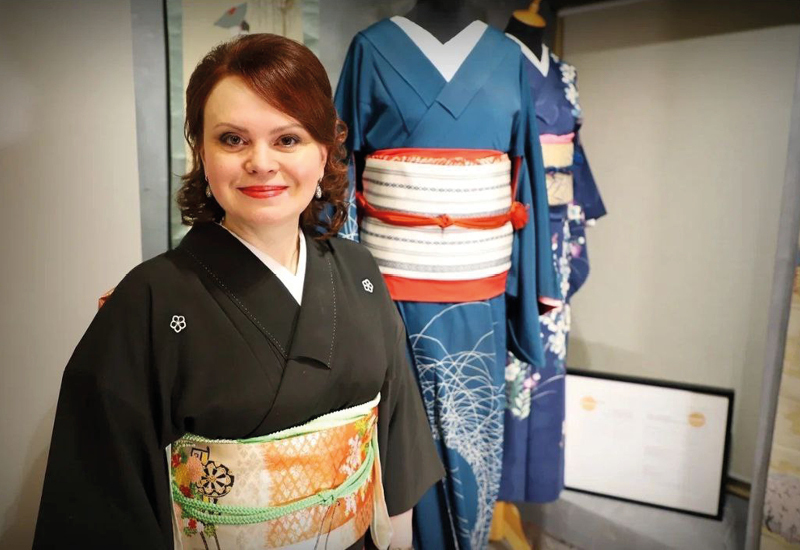
You are an experienced entrepreneur who has worked with the Japanese for over 20 years. What aspects of Japanese business etiquette and mindset need to be taken into account by those who are planning to do business in that country?
Qualities such as politeness, precision, punctuality, discipline and orderliness remain very popular and in high demand in Japan. Success is unlikely without paying due attention to this point. It would also be a mistake not to appreciate the importance of the culture of exchanging business gifts and souvenirs; few business meetings in Japan succeed without this ritual. The choice of a gift for Japanese partners must be approached with as much caution as possible. The exact makeup of the delegation and the hierarchy of seniority among them must be checked in advance. In a business environment, the Japanese value gifts and souvenirs which reflect the work of the partner company. But an appealing present which reflects the character of traditional crafts or regional customs may also be well received. Of course, it’s probably better to avoid the larger presents of which our compatriots tend to be fond. The Japanese see beauty in miniature. Large presents invariably perplex them. What’s more, you should be prepared for a longer initial period of negotiations than the norms of Western business allow. This illustrates the extreme wariness towards outsiders of the Japanese that I mentioned earlier. They love to make enquiries and ask for recommendations, especially informally. However, if you pass the test and are deemed trustworthy at the first stage, the rest of the negotiations will pass much more smoothly.
Many of those interested in the history and culture of Japan (and Britain) have read Vsevolod Ovchinnkov’s book Sakura and Oak, which was published way back in 1971 but remains popular. How much are the author’s observations and reflections applicable to the Japanese and English today?
I note that this popular Soviet bestseller, which issued from the pen of the talented journalist and writer Vsevolod Vladimirovich Ovchinnikov, is strictly speaking two separate books which came out at different times. The book devoted to Japan is called A Branch of Sakura and it was published in 1970, while the book dealing with England, entitled Oak Roots, saw the light of day in 1980. So ten years passed between the publication of these two books, yet now they are seen as two parts of one work. This is natural, as the author himself often refers to the first book in the second volume, juxtaposing and comparing the two countries, making references and drawing parallels. Additionally, at a later date, Ovchinnikov added some new commentaries to his publications, further cementing the connection between the texts. So, with time, they increasingly became identified as one work.
I admit that I’ve had to reread both books before our interview to refresh my memory and check their contents against my own feelings today. It was a great pleasure. Time and again I’ve enjoyed the author’s imagery, keen eye, insightfulness, wisdom and the breadth of his outlook. Having checked myself, I’d say that neither book has lost its relevance. Of course, we mustn’t forget that anything that flowed from the pen of an international journalist in Soviet times had to meet certain ideological norms, but if we take out a few political points and some of the descriptions of aspects of daily life that have undergone change in the last half-century, when it comes to national characters and mindsets, Ovchinnikov managed to capture something vital, and fundamental, so his conclusions and descriptions don’t seem dated. On the contrary, they seem rather sharp and contemporary. On the other hand, as a professional Japanese specialist, with wide experience observing inhabitants of the Land of the Rising Sun personally, it’s much easier for me to judge the fairness of what Ovchinnikov writes about Japan than about England, the cultural code of which I’m only just beginning to decipher. For instance, the author observes that Japan and England are quite similar in having clearly defined social hierarchies. I know firsthand that this social order has been preserved in Japan to this day, but what about England? I haven’t seen enough to assess the fairness or error of Ovchinnikov’s words. Another topic he discusses is the similarities between the English and the Japanese approaches to understanding the beauty of the nature that surrounds us. I can only agree with this, as my key to understanding English culture has been via similarities in their way of dealing with the natural and the artificial which I feel they share with the Japanese.
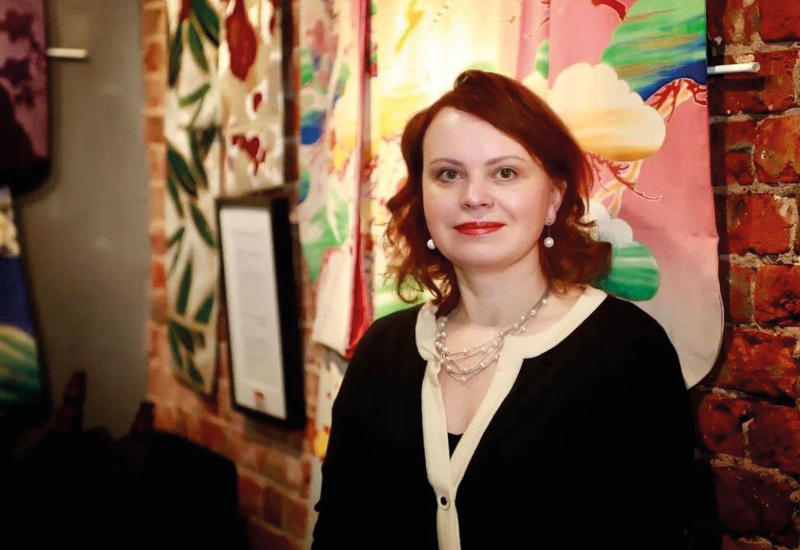
While France and Japan may be linked by art, as the influence of Japanese painting styles on the impressionists is widely known, some consider England and Japan to have similarly distinct mindsets as both are insular cultures. Would you agree with this statement? What parallels do you observe?
I wouldn’t say that they were similarly distinct as the historical paths which have led to any similarity are very different, but some parallels really can be drawn. To answer this question, I’d like to cite Vsevolod Ovchinnikov once more and pick out what seems to me to be one of his most astute observations. Both peoples value the natural more than the artificial, but this doesn’t affect human behaviour. While the English prize individualism while the Japanese censure it, both countries have the same propensity to fetishise self-control and rules prescribing acceptable behaviour. Neither Japanese and English gardeners aim to subjugate nature to their will, instead, they attenuate its natural beauty. Both Japanese and English chefs strive to bring out the natural flavour of their ingredients, in contrast to the inventiveness and refinement of the masters of French and Chinese cuisine. A respect for the work of nature can be seen through the applied arts of both peoples. Ovchinnikov stresses that in their personal lives, the English, in contrast to the Japanese, have developed a cult of independence and self-reliance, freeing the individual from the burden of obligation to their relatives. However, he writes that, at the social level, the English value a feeling of community just as much as the Japanese. This idea of public service is personified by the Japanese samurai and the English gentleman.
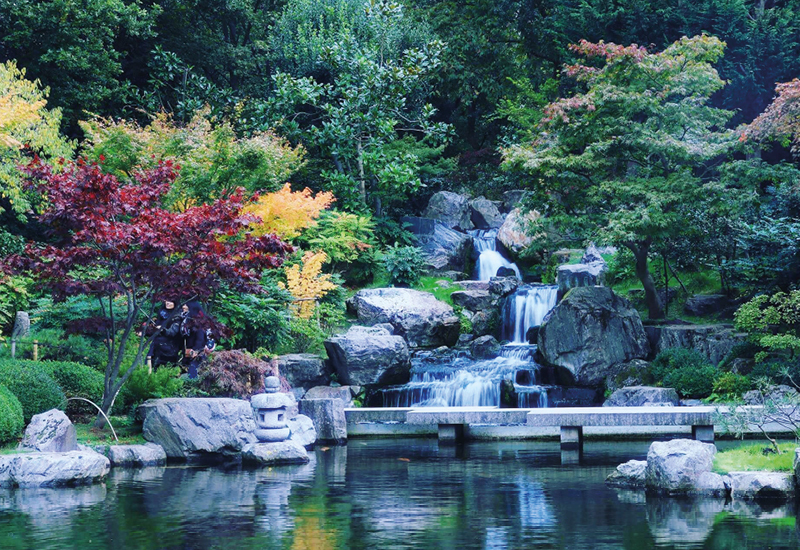
In England, there are several collections of Japanese art and Japanese gardens, for example, in Regent’s Park and Holland Park. Which of these are authentic? Please tell us about these places. Does anything among the exhibits stand out as being absent in other collections?
So far, I have only managed to visit the Japanese garden at Holland Park, which I find quite authentic and charming. As is well-known, the Japan-British friendship society gifted it to London in 1991 to commemorate a long period of mutual relations. The landscape design of this garden, created with the direct participation of Japanese master gardeners, exemplifies the Kyoto rock garden, which is reflected in the rich palette of typical rock-garden elements such as stone pathways, bridges, lanterns, wells, many-tiered waterfalls and pools stocked with multi-coloured carp. I went there with my daughter in early autumn and we caught the first reddening filigree of the Japanese maple leaves. For an instant, I could forget that we were in central London. On one of my first visits here, I went to see the renowned collections of Japanese art at the British Museum and the Victoria and Albert Museum. Both of them possess rich Japanese collections with a great variety of authentic artefacts made of metal, ceramics and lacquer, textiles, folding screens, paintings on silk, ukiyo-e engravings and, of course, kimonos. Unfortunately, in Russia there are no public or private collections of Japanese art that are of comparable diversity or value, so I try not to miss any opportunities to continue my acquaintance with them every time I come here. But time is always very limited, which is why many things are still only in the planning stage.
Please tell us how you became a Japan specialist, how Japan has influenced your perception of life and what, besides your profession, it has changed for you.
I became a Japanese specialist pretty much by chance, although quite quickly, I realised how fateful the combination of circumstances was. On getting into the Institute of Asian and African Countries at Lomonosov Moscow State University, I wanted to study Chinese but I was put in the Japanese group. Initially, I didn’t see a big difference, so I went along with it. At the time I had very little idea of the difficulties I’d encounter when studying such an unusual language. In those early days of my studies, I felt like quitting and doing something else on multiple occasions, but I was gradually gripped by a stronger and stronger interest in Japanese culture, compelling me to grit my teeth and keep working my way through the intricacies of the writing system and the dissembling forms of polite speech. My first genuine interest in Japan was aroused in lessons of Japanese history when studying the golden age of Japanese classical culture; the Heian period (the ninth to twelfth centuries). My coursework, which was dedicated to the literature of this period, overturned my understanding of the concept of the sublime, forever linking it with the idea of mono no aware (the sad charm of things). My fascination with Japan gradually solidified. After my student placement, during which I developed an affinity for Japanese culture and immersed myself in its charms, I realised that I couldn’t part with it, so I made a conscious choice. Japan has had a very great influence on my formation as a professional as well. Through discovering Japan, I have learned to understand my own culture better too. While interacting with the Japanese, I learned about my own qualities. My love story with this country began way back in my student days. Since then, hundreds of new pages have appeared in it, full of exciting discoveries, although not all of them are necessarily pleasant. Japan has taught me not to take good things for granted, but to show gratitude even for small things, to value the modest joys of each day, to plan my time and to consider the consequences and responsibilities entailed in my actions. All my successes in the professional sphere are connected in one way or another to Japan, and my main mentors in business have also been my Japanese colleagues. I’m by no means saying the Japanese way is the best, it’s just that, by the will of fate, it’s turned out to be the best way for me personally.






